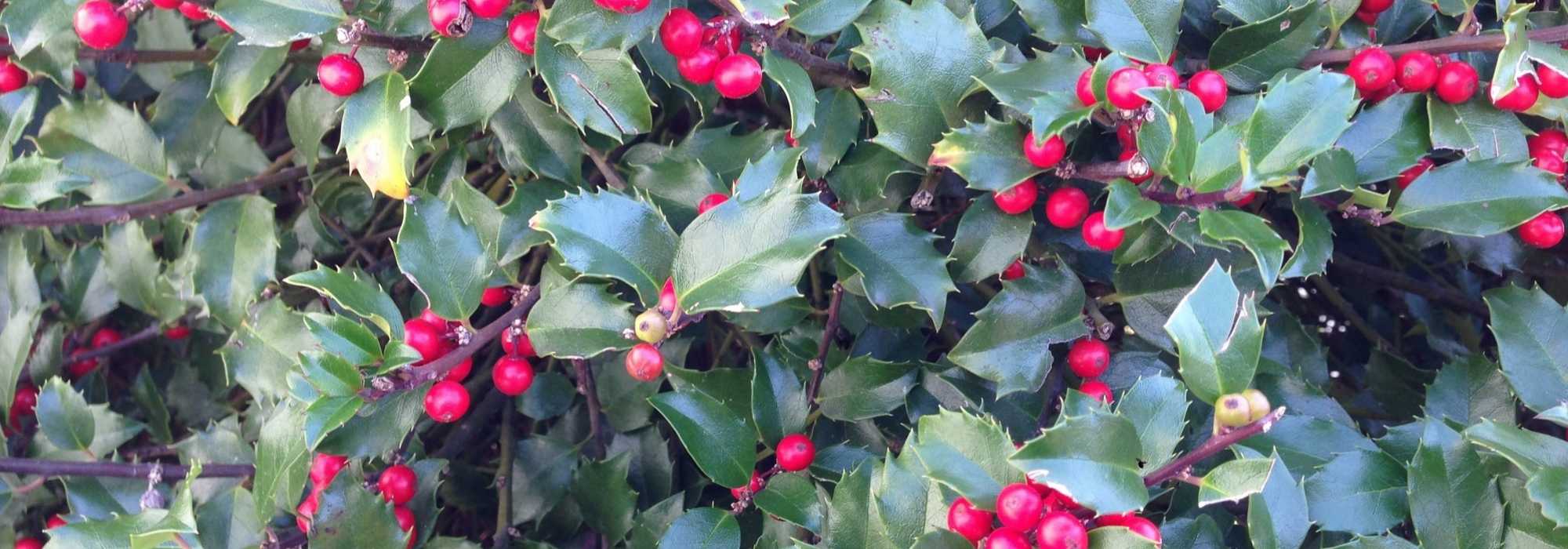
Holly: planting, pruning and care
Contents
Holly, in a nutshell
- These trees or evergreen bushes with leathery leaves, sometimes very thorny, are very hardy.
- Hollies enliven understorey in winter with red berries favoured by birds.
- Numerous cultivars exist with varied foliage and fruit, but beware male plants of dioecious species that do not bear fruit, as in common holly (Ilex aquifolium).
- Holly can form a defensive hedge, clipped or left untrimmed, a cloud-pruned specimen as with Ilex crenata, or a magnificent solitary specimen.
A word from our expert
Holly takes pride of place in Christmas imagery with small scarlet berries set against glossy, spiny leaves. But hollies represent a large family of bushes that merits understanding and varied use in the garden. Foliage is very elegant, of simple shape, ovate, lanceolate or coarsely dentate, of varying size and shades ranging from very dark glossy green to variegated cream-pink, including bluish-grey tones.
The European holly, Ilex aquifolium, is the most familiar to us as it is commonly found in woodland, but it should be noted that there are more than 350 species of holly, most originating from the Americas and south-east Asia. This genus has been the subject of many selections, notably for leaf shape and colour. There are bushes with entire twisted leaves – Ilex aquifolium ‘Crispa’ (male clone) – or simply crenate – Ilex crenata –, very dark foliage with purple shoots such as Ilex x meserveae ‘Blue Ange’ or variegated forms like Ilex aquifolium ‘Argenteomarginata’ – Ilex ‘Golden King’ – as well as hollies with yellow fruit such as Ilex aquifolium ‘Amber’, whose leaves are thornless.
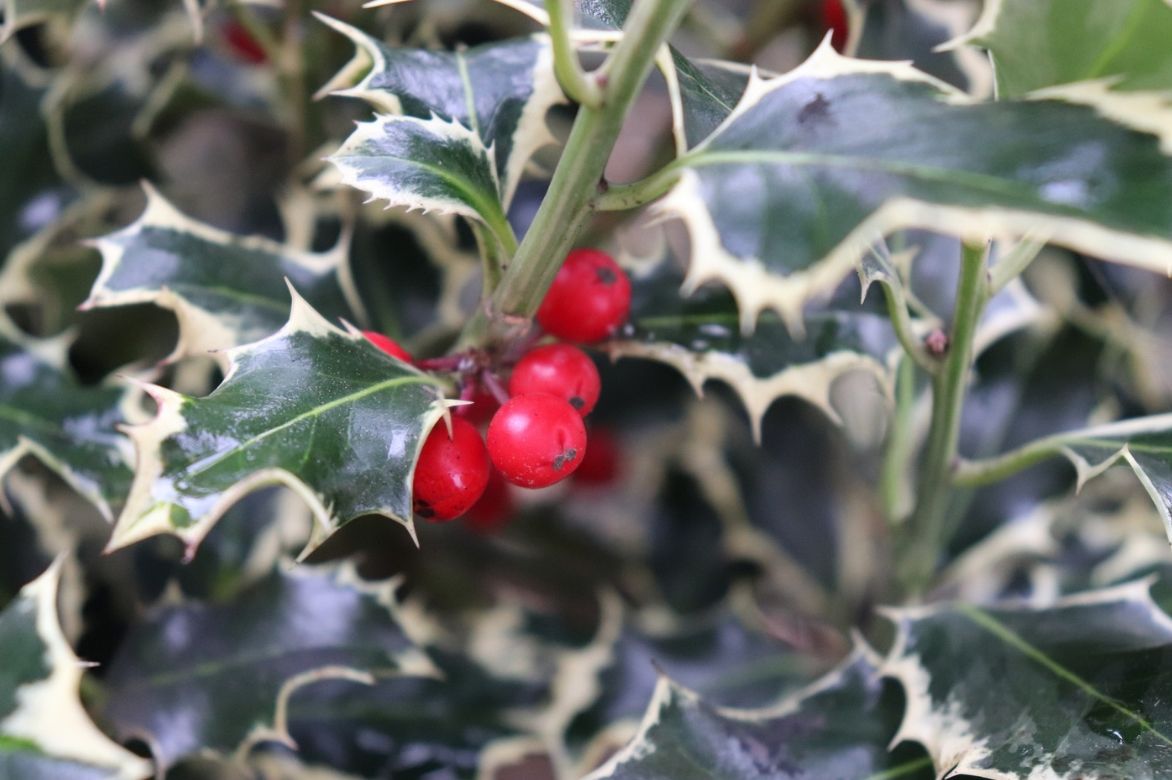
Some hollies produce drupes
Some varieties bear flowers of both sexes on the same plant, unlike most hollies, which means fruiting is much more abundant – Ilex aquifolium ‘JC- Van-Tol’
Although growth is fairly slow, you may prefer dwarf varieties reaching 60 cm at maturity such as Ilex crenata ‘Convexa’ (with black fruit) or ‘Golden Gem’ (with golden foliage but without fruit). These small bushes resembling box are well suited to container culture and topiary pruning.
All these hollies are very hardy, require rich, moist soil and grow very well in partial shade. Lighter foliage forms such as Ilex aquifolium Argentea Marginata, however, require more sun.
Description and botany
Botanical data
- Latin name Ilex
- Family Aquifoliaceae
- Common name Holly
- Flowering May to June
- Height between 0.30 and 10 m
- Exposure shade, partial shade to sun for some species
- Soil type any deep soil, preferably moist, even calcareous depending on species
- Hardiness Excellent (-20 to -25 °C)
Genus Ilex includes nearly 400 trees and bushes, evergreen and deciduous, mainly native to temperate zones of northern hemisphere. They have changed little since appearing on Earth and have experienced major climatic upheavals in their environment. This probably explains their robustness and adaptability.
Common holly (Ilex aquifolium) has a very wide distribution from Scandinavia to the Caucasus, from southern Europe to North Africa, and in Asia Minor. It is found throughout much of France though rarer in the south-east. A woodland species, it can grow up to 2,000 m altitude in the southernmost parts of its range.
This bush slowly forms a dome reaching 4–6 m in height and about 3–4 m in width and can live 400–500 years. Young shoots have smooth green bark that turns grey with age. They bear alternate, single leaves that usually persist for three years. The lamina is leathery, covered by a thick cuticle (a kind of wax) protecting it from dehydration; it is dark glossy green above, paler and matte beneath. It is notable for displaying heterophylly, with undulate, bristly leaves bearing very sharp thorns at the base of the bush and simple entire leaves toward the top and on flowering shoots. Other species may have entire-edged, ovate, non-spiny leaves, bluish-green in tint on purple shoots in Ilex x meserveae, evoking box in Ilex crenata. This latter species, commonly called Japanese holly or crenate holly, has slightly faster growth than box and can be used to create low to medium hedges or be pruned into cloud shapes.
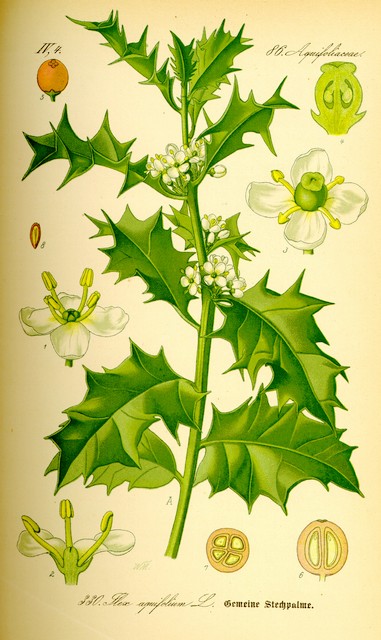
Ilex aquifolium – botanical illustration
Flowering, which takes place in May–June, is rather insignificant, consisting of clusters of small white or greenish 4-petalled flowers but very melliferous. Flowers are generally borne on separate male and female plants, though each retains rudimentary organs of the opposite sex: male flowers on short peduncles have 4 tiny sepals, 4 white petals slightly veined with purple and 4 stamens with an atrophied sterile ovary at the centre. Female flowers on long peduncles, in addition to 4 sepals and 4 petals, have a large ovary formed by the fusion of 4 carpels and 4 reduced sterile stamens.
Fruits about 1 cm in diameter are drupes with 4 stones and not berries, each stone containing 1 seed. They appear bright vermilion red, dark red, yellow or black. Only female or hermaphrodite plants can produce fruit. Fruits can persist on the plant throughout winter until March if not eaten by birds. Ingestion in large quantities causes abdominal pain, vomiting and diarrhoea.
Mediterranean holm oak, Quercus ilex, gave the Latin genus name to holly, Ilex, because of similarity of their prickly leaves. The species name of common holly, aquifolium (“with watery leaves”), is likely a corruption of acrifolium (“with sharp leaves”). A place planted with holly is called a houssaie, a name found frequently in toponymy of northern France.
Holly leaf contains ilicin, a compound similar to quinine, with antispasmodic, febrifuge and tonic properties. Argentinians prepare mate from leaves of Ilex paraguariensis, which contains caffeine and is drunk like tea.
Holly wood, ivory in colour, has a fine grain and is reputed both hard and flexible, hence its use for tool handles and canes. Low in water, it burns readily and is used as fuel. The inner green bark of holly, revealed after peeling the corky outer bark, was used to make a glue.
Main varieties of holly
Common holly Ilex aquifolium and its hybrids Ilex x altaclarensis are appreciated for slow growth, attractive glossy foliage highly resistant to air pollution, and of course for fruiting that symbolises Christmas. Hybrids have larger berries and variable leaves. To be sure of getting berries, choose female holly cultivars such as ‘Alaska’, ‘Argenteomarginata’, ‘Golden King’ (note ‘Golden Queen’ is male), ‘Madame Briot’ or ‘J.C. Van Tol’ and ‘Pyramidalis’, which bear flowers of both sexes on the same plant. A male plant can pollinate up to five female plants.
American holly (Ilex x meservae), besides great hardiness and tolerance of lime, is notable for pretty small non-spiny foliage, dark with glaucous reflections, and a more compact habit. Female clones also produce very generous berry crops. Notable among these meservae are a male selection ‘Blue Prince’ and a female selection ‘Blue Princess’.
Japanese hollies (Ilex crenata) are not spiny, resemble box and can be trained as topiary. Female plants produce glossy black berries.
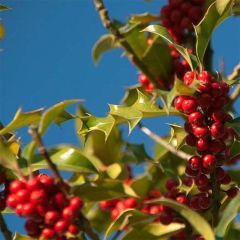
Common Holly - Ilex aquifolium JC Van Tol
- Flowering time April, May
- Height at maturity 6 m
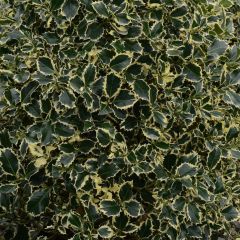
Ilex aquifolium Argenteomarginata - Common Holly
- Flowering time June
- Height at maturity 8 m
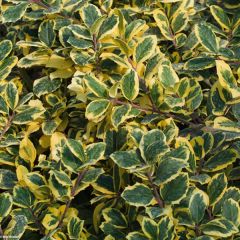
Ilex Golden King - Holly
- Flowering time June, July
- Height at maturity 6 m
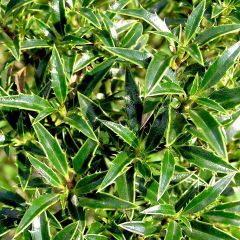
Ilex aquifolium Myrtifolia - Common Holly
- Flowering time June, July
- Height at maturity 3,50 m
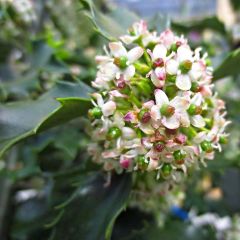
Ilex x meserveae Blue princess - Blue Holly
- Flowering time June, July
- Height at maturity 4,50 m
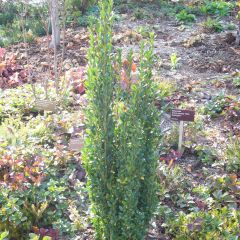
Ilex crenata Fastigiata - Japanese Holly
- Flowering time June, July
- Height at maturity 2,50 m
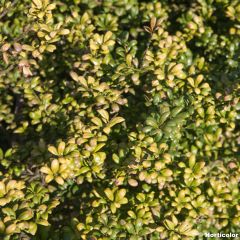
Crenate Holly - Ilex crenata Convexa
- Flowering time June to August
- Height at maturity 1,50 m
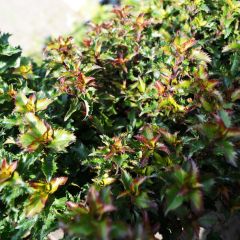
Ilex x meserveae MAGICAL Little Rascal Mondo - Blue Holly
- Flowering time June, July
- Height at maturity 80 cm
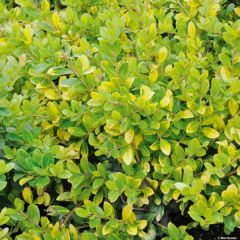
Ilex crenata Golden Gem - Japanese Holly
- Flowering time June, July
- Height at maturity 90 cm
Discover other Ilex - Holly
View all →Available in 4 sizes
Available in 1 sizes
Available in 0 sizes
Available in 1 sizes
Available in 0 sizes
Available in 1 sizes
Available in 1 sizes
Available in 1 sizes
Available in 3 sizes
Available in 1 sizes
Planting
Where to plant holly?
Hollies prefer deep, cool and well-drained soils, as well as the shade of the understorey. They can nonetheless grow in open situations. However crenate holly or Japanese holly (Ilex crenata) requires a position sheltered from scorching sun, except variegated or golden forms, in soil that remains somewhat cool but well-drained.
American species × meserveae requires sun as do cream-variegated forms of Ilex aquifolium and Ilex crenata. It is tolerant of calcareous soil unlike Ilex aquifolium or Ilex crenata.
Hollies tolerate pollution and sea spray well but do not tolerate drought of soil or air, shallow soils or transplanting.
When to plant?
Plant holly in late summer–autumn or preferably in March.
How to plant?
This plant is easy to grow but its slow growth makes it relatively expensive to buy and it is used more as a specimen than as a hedge.
- Plunge the bucket into a tub of water to moisten it thoroughly.
- Dig a hole three times wider and deeper than the rootball and loosen soil around it with the prongs of a digging fork.
- Add a few handfuls of sand and gravel to ensure good drainage around roots, together with some compost. In heavy soil, choose planting on a mound or within a rockery.
- Place plant in planting hole.
- Replace soil and firm lightly.
- Water and mulch to keep soil cool and moist.
Care
Water holly regularly to keep soil cool for at least 2–3 years after planting. Mulch with compost to maintain good humus-bearing soil but do not add manure.
If you want to train holly as a hedge, carry out pruning in March with shears or a hedge trimmer while protecting yourself with gloves and heavy clothing. To maintain topiary, you can also prune in June and September but risk removing fruits on female or hermaphrodite plants.
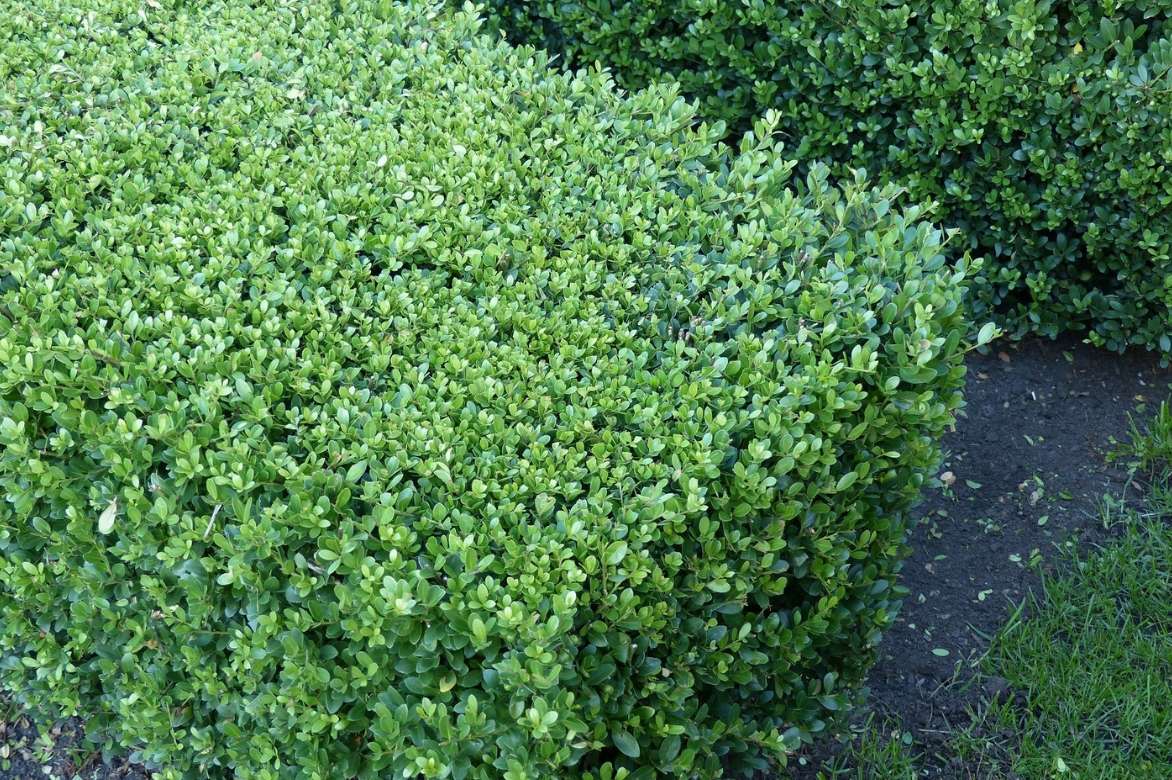
Low clipped hedge of Ilex crenata ‘Green Hedge’
Holly is rarely affected by disease but can suffer an attack by Pulvinaria scale insects, visible notably in May–June as cottony masses (eggs) on undersides of leaves. Leaves become sticky and covered in sooty mould. Spray pyrethrin on mobile larvae in June–July every 10 days, or apply mineral insecticidal oil to adults, which are protected by a brownish shield and found under the leaves.
Larva of holly leaf miner, which creates tunnels in leaves, does not cause serious damage. However, it is advisable to remove silky masses at tips of shoots produced by holly tortrix, a rather voracious greenish‑yellow caterpillar about 1 cm long.
Squash any aphids at tips of new shoots.
→ Also read our advice sheet: Diseases and parasites of holly
Multiplication
Easiest method of propagation is to layer low branches, as seed germination can take up to two years and may not produce same variety, while success of propagation by cuttings is not guaranteed.
Propagation by cuttings
Prepare a nursery bed with turf mixed with sand.
- Take lateral shoots well lignified 15 cm long between July and September.
- Remove leaves situated near base of cutting.
- Dip bases of cuttings in plant hormone before inserting them two-thirds of their length, avoiding contact between them.
- Cover with a sheet of clear plastic and place under a cold frame for the whole winter.
- In spring, separate rooted cuttings and plant them in pots.
- Wait until following year to plant out.
→ Learn more about holly propagation by cuttings in our tutorial !
Uses and companion plants
Hollies adapt to many growing conditions while adding an original touch to the garden. They thrive within groves of leafy trees, notably beneath oaks, beeches or small trees splendid for their autumn foliage such as Parrotia, Cotinus, Sorbus domestica… They also provide a pretty colour contrast in front of grey‑blue conifers such as Epicea pungens Glauca.
You can place them as a specimen to act as a focal point, notably those with a conical habit and cream‑variegated foliage, to mark a spot, an entrance, and even grow them in a large pot. A row of pyramidal hollies brings great majesty to mark the entrance of a park or to structure a scheme in all seasons.

A hedgerow planting idea: Crataegus monogyna, Ilex aquifolium ‘Argenteomarginata’, Symphoricarpos ‘Mother of Pearl’, Ilex verticillata
In cold regions, holly is widely grown within country hedgerows, together with hawthorn, snowberries, and other evergreen or deciduous hollies such as Ilex verticillata, whose naked branches are laden with brilliant berries.
Japanese holly (Ilex crenata) is an ideal subject for forming a low to medium hedge, together with laurustinus, cotoneaster or Mexican orange. As a specimen, trained as topiary or grown as a small tree, it draws attention in winter. It can also be planted in a large container or within a shaded rockery. It brings much charm to a zen garden alongside bamboos, Japanese maples, camellias…
→ Discover other pairing ideas in our advice sheet Pairing hollies
Further reading
Discover:
- Our range of Hollies
- Our advice sheets: Choosing a holly; 5 hollies with variegated foliage to brighten the garden
- Our advice sheets: Hollies for low hedging ; Thornless hollies: our varieties for an elegant, accessible garden ; Dwarf hollies: varieties to structure garden and patio.
- Our advice to grow a holly in a pot: to grow a holly in a pot
- Michael’s article: Whorled hollies: ‘Southern Gentleman’ and ‘Maryland Beauty’
- Our tutorial: how to prune a holly?
- Video: Ilex
- Video: Ilex verticillata
- Learn more about plants with toxic berries
- Subscribe!
- Contents

































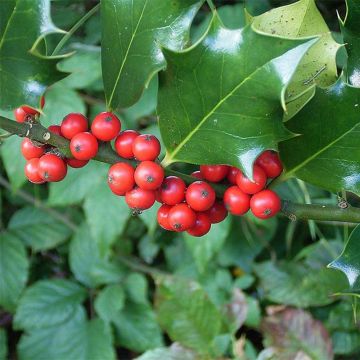


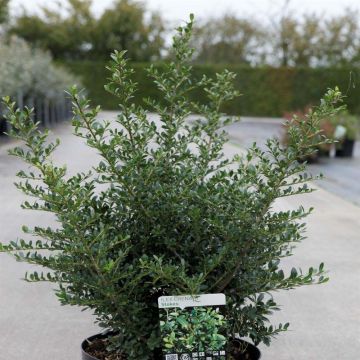
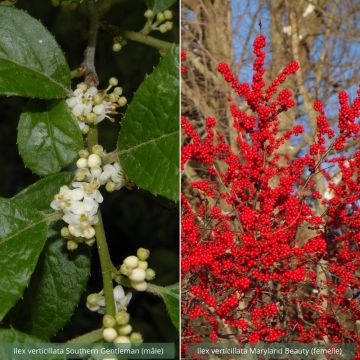

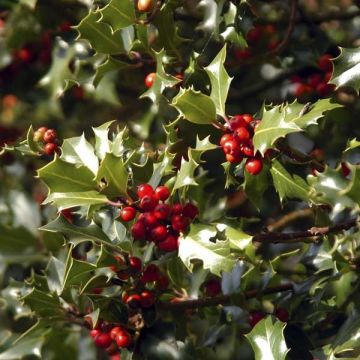

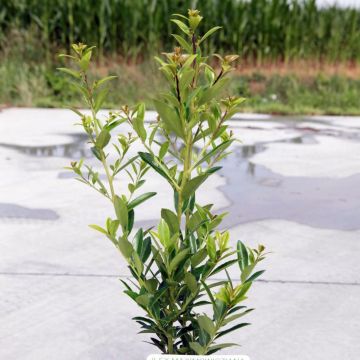

Comments